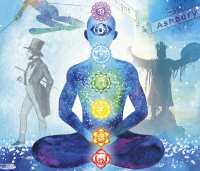
The Age of Enlightenment and The Vision of a More Awake and Civil World
Excerpt from Robert Sachs’ upcoming book, The Path of Civility: Perfecting the Lessons of a President by Applying the Wisdom of a Buddha - www.o-books.com
What distinguishes the 1700’s during the “Age of Enlightenment” is perhaps that there was a greater collective of thinkers, East and West, and beyond the enclaves of the parochial religious, where the separation between the sacred and mundane was not so fixed and who believed that it was possible “to create a more perfect union.” Despite the savagery, barbarity, and hubris of our ancestors, even our neighbors, it was possible to actualize and really implement our better instincts, rooted in the love and compassion espoused by those to whom we turned for solace and guidance. This dream was built upon the imperfections of our collective past, an awareness and acknowledgement of the legacy of those who demonstrated civility and nobility of character, with the goal to create that which would elevate and truly express civilization at it’s finest.
Born into this time in history, George Washington - recognized not only as the most exalted “father” of the American nation,” the first President of the United States, but also a man highly regarded by leaders around the globe – was strongly influenced by The Age of Enlightenment. In a time when science and industry was expanding and the ravages of the Middle Ages and continuous war and intrigue amongst factions of Christendom, “free” thinkers were embracing a re-imagining of their faiths, seeing a God that was not only transcendent, but also imminent in all things, including man. Deists, and others like them were no longer looking for absolution from their human tendencies or a mere exoteric adherence to moral and ethical prescriptions in order to be civil and civilized. They saw each and every one of us as playing the essential role in learning ways to understand and transform our own behaviors from within. One example is the movement of Freemasonry, established as a fraternity in 1717 in England, founded on the tenets of brotherly love, relief, and truth, demanding of its members to study that which circumscribed our earthly desires in order to accomplish these noble intents.
In his 1776, historian and author, David McCullough, tells how Washington who, though from landed gentry in Virginia, did not receive the benefit of more than eight years of formal education. Washington, himself, considered this a disadvantage, making him self-conscious in the presence of those whom he considered as more learned or of an elevated status in the society of the time. A man of great stature and bearing – being six foot two inches in a time when the average man was a clear six to ten inches shorter – he was use to hard work and had a practical knowledge of the land, learned the ways of military discipline, distinguished himself in that arena while also becoming a Freemason, himself, at the age of 20. His military career and the moral and ethical lessons and leadership training in Freemasonry would more than compensate for a lack of knowledge in teaching him how to present himself with the dignity and civility he saw so essential to social and personal harmony. We know that these latter points, dignity and civility, were so essential to his training and resulting character from an early age. One of the few examples we have of writings penned by Washington is a little booklet he wrote as a young man, known as “The Rules of Civility.”
PRESS PLAY FOR A SPECIAL MESSAGE FROM ROBERT SACHS
As early as the Second Century B.C., traders and adventurers were travelling the Silk Road, which connected the Orient to the Mediterranean. Thus, there would have been an awareness of Buddhism and the cultures that ascribed to its tenets. The famous Marco Polo records his encounters and reflections on the Tibetan masters he met and observed while visiting the Chinese Imperial Court. Thus the teachings of the Buddha would have been known to thinkers, philosophers, and spiritual aspirants of Europe during the Age of Enlightenment in the Eighteenth century. How these teachings, with their emphasis on personal growth, responsibility, enlightenment, and altruistic action to the benefit of others may have influenced this Age of Enlightenment has no doubt been investigated. But, in talking about how to interpret “Perfecting the Lessons of a President by Applying the Wisdom of a Buddha,” I wish to focus on the person and circumstance of the historical Buddha, Sakyamuni, who lived nearly twenty-two centuries earlier.
Sakyamuni, whose birth name was Siddhartha Gautama, had a different background and training. Born to be a king, his education was the finest in its day and he learned the ways of power and leadership that he was presumed to deploy when it was his time. But, after a series of life-changing events and using his own power of reasoning, he concluded that his life’s purpose was not to take on the throne after his father, but rather, pursue a life more focused on spiritual, rather than worldly rewards.
I say “spiritual” rather than “religious” because the teachings he gave and would be known as the dharma (translated: the way things are) flew in the face of the Hindu views and caste system that dominated the Indian subcontinent. Like Western Age of Enlightenment thinkers who saw the ravages of the Middle Ages, the Crusades, and so forth, Siddhartha Gautama knew of the strife, intrigues, and even wars waged in the name of or for religion throughout India. But rather than taking sides, he stepped back and took a more dispassionate approach. His conclusion was that if God and the laws of God are objective truths and people are killing each other over the interpretation given, then the problem is not with God or God’s laws, but rather in the minds of humans who have their own subjective biases as to who God is and what he/she means. Thus, what we need to do is examine how we think, how we come to the conclusions that we do. Thus the dharma of the Buddha is really a mind science much more than it is a religion. And the goal of these teachings by he who would be known as The Buddha Sakyamuni was to transform our worst tendencies to awaken to our inherent goodness and become more peaceful and “civil” to each other. One could argue that the path the Buddha lays out is exemplified in the world as “The Path of Civility.”
The Buddha never cloistered himself or those who followed him away from society. Indeed there were retreats in remote, peaceful areas to support ongoing, intense meditations and contemplations. But, for the most part, many of the communities he formed were close to urban centers, where even the lay person could come to learn to meditate, learn how to calm down, and learn to be a better citizen. But, this did not mean that the spiritual communities or its members around the Buddha were the models of such. Being well educated and savvy to the ways of the world of men, he could see that the religious life had every bit as much political wrangling as the royal court. Thus, he allowed his transcendent eye to bring a focus on social and communal life, be it secular or religious. And, the conversations and recommendations he makes regarding speech, conduct, and actions have stood the test of time. Hence it is that the wisdom shared in teachings known as sutras applies as much to modern secular life as it did to the religious sects and communities of antiquity.
In essence, both Washington and the Buddha shared an understanding of social and communal life and the necessity for Civility to be an important civilizing feature.
Excerpt from Robert Sachs’ upcoming book, The Path of Civility: Perfecting the Lessons of a President by Applying the Wisdom of a Buddha ~ www.o-books.com
READ THE PATH OF CIVILITY TODAY!
YOU MAY ALSO ENJOY...
CLICK BOOK COVER FOR MORE INFORMATION
Categories:
0 comments on this article


















